I am trying to figure out whether I need termination resistors for my PCB routing between a µ-Controller and an SDRAM (IS42S32800J-6BLI) that I plan to clock at 166 MHz. According to Table 72 of ST's datasheet for the STM32H745, the rise/fall times are 1.5 ns at a supply voltage of 3.3 V, 10 pF load, and maximum speed setting.
If I follow the guidance of the last answer of this stack exchange post, I get a bandwidth of BW = 0.35/t_rise = 233 MHz. An eighth of the wave length amounts to 16.1 cm.
I have done some first routing and expect my trace lengths to be no more than 4 cm. So it appears to me that I don't need any termination resistors. Yet, when I look at some of ST's evaluation board schematics (like this one for the STM32H745 discovery board), I see that they use 33 Ω resistors. I checked their board routing and while they are longer than what I expected for my PCB, they are nowhere near the 16.1 cm. Am I ill-advised by leaving them out? What would be the reasons that I should add termination resistors?
For completeness sake, I've done some microstrip calculations using this online calculator and ended up with a single-ended impedance of 113 Ω for a top or bottom layer route. The propagation delay is 54 ps/cm.
Please give me some guidance on how to proceed here. Is there something that I am missing? Ideally I want to avoid adding 44 resistors as they will occupy a lot of space and make routing harder on a 4-layer PCB, even if the resistors are just size 0402.
Here's a summary of the calculations:
